Headford Lace Trail
The Headford Lace Trail is part heritage tour, part time-travel adventure, part geo-located musical performance. It’s designed as a place-specific walk, but if you can’t make it to the town of Headford in County Galway, Ireland, you can listen remotely here or using the interactive map below.
The walk has been shortlisted in the 2023 Sound Walk September Awards from Walk Listen Create, and I’ve written recently for their website about the project’s background, and how story ideas were hatched, written and produced.
Now, thanks to SonicMaps, I have a further opportunity here, to explore in more detail some of the creative, production and technical aspects of the project.
There were things I did early on that helped all the way through – I’ll mention those here. There were also points where I got stuck – maybe I needed an idea, a technical solution. So I’ll also tell you what I did to get unstuck.
But this is as much about the things I decided NOT to do, as much as TO do. And I might even include a few things that, in hindsight, I might have done differently.
So I’m going to throw everything at you, in the hope that you pick up something you need to hear, perhaps for your own audio walk.
At a minimum I hope to enthuse you about the production process itself, so that if you’re planning a sound walk, or if you’re grappling with one already, you can actually enjoy working out the many little problems you’re encountering.
Don’t only walk alone, literally or metaphorically
From the very beginning this was a collaborative project – how could it be anything else? Firstly, it was the Headford Lace Project (HLP) that commissioned me to make an audio walk: my initial brief was to create something based on the in-person guided tour they provide to visitors.
But secondly, that group – the lace project – was also my main source for the historical facts and insights that would be the basis of the audio walk itself. So, to my great benefit as a producer, there was consultation and feedback all the way through – and I leaned especially heavily on the support of the group’s current chair (and ‘voice of the audio walk’) Eilís Nic Dhonncha.
My first step was to walk the proposed route several times with different members of the lace group. I recorded everything they said as we walked, and many of their off-hand comments or turns of phrase made it into the script as lines for fictional or historical characters.
But I also walked the route many times alone. Early on I spent long periods just loitering and listening to the soundscape, observing who was using the streets, letting feelings and ideas come and go, and looking for answers to practical questions: How do things feel at this point in the story? What needs to happen here? How will we give directions there? Where might be a natural space for a musical performance? How could we use that long empty section of road between stops?
These early walks also got me imagining scenes or activities, many of which never made it into the final trail, but some which did: a lace merchant passing through, people fetching water, cleaning soup pots or making lace, children playing, musicians tuning up their instruments.
Later on I paced out the route over and over again, during the different stages of writing, recording, editing and mapping, checking for clarity, cohesion, coherence, duration, timing, levels.
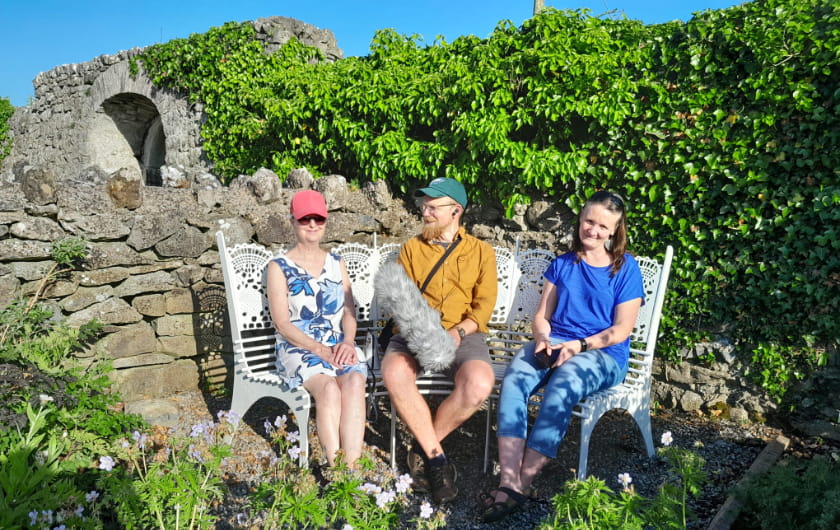
You can’t walk forever
The Headford Lace Project’s in-person tour was a good natural length of around an hour, but for the audio walk I knew I’d have to keep close eye on duration. I set a target of 45 minutes, but in the end it averages around 55 minutes – which I reckon is just within what is suitable for a walk of this kind.
It was mainly for reasons of duration and distance that we resisted the urge to extend the trail in various ways: for example going via the castle ruins, or starting further west at the Catholic church. It’s tempting to try and do everything, but you can’t.
For listeners, the first step is the hardest
This walk wasn’t always necessarily destined to be on SonicMaps. I have used another platform, also very good, for previous sound walks. But with client’s and funders’ money at stake, I shopped around for the best value and mix of features for our needs.
Cost was a consideration. HLP is a volunteer-run local heritage group, not a big-budget tourism agency. Galway County Arts Office kindly funded production and platform fees, but we had to spend that small budget wisely. SonicMaps ‘Basic’ plan provided 100 MB of hosting, equating to about 160 minutes of audio – more than sufficient for our purposes.
From past experience I knew that initial listener onboarding is the biggest risk point for user problems or walk abandonment. Sound walks that run on people’s own phones are still an unfamiliar medium. People may not know what is supposed to be happening, or whether their phones are even working correctly.
Thankfully there exist platforms like SonicMaps that make audio walks even possible, and that are working hard with each update to steadily make them easier and easier to access.
But people can still get tripped up by unfamiliar uses of technology. Fundamentally we are trying to do something which isn’t a built-in, mainstream, feature of any mobile phone (yet).
So onboarding sometimes requires a level of confidence or knowledge that many ordinary users just don’t have – for example tweaking app-specific GPS settings. Even relatively simple things like installing an app, or even just opening a link in a browser, can be an obstacle for certain cohorts of users, and these are certainly people we would like to reach with our walks if we can.
So I was very keen to maximise accessibility by reducing the number of user actions between someone deciding to do the walk, and experiencing it successfully. For this reason, we liked that SonicMaps ran in a browser, with no need for an app installation. This also suggested wider compatibility over time and across the huge range of devices that might be used.
I also created a publicity leaflet that doubles as a set of onboarding instructions for the Headford Lace Trail. It’s designed to be the main funnel for people doing the walk – they’ll pick it up in various tourist spots around Headford or the wider region, and have it in hand as they begin the walk. It guides them step by step through loading the walk, and troubleshoots the most common issues.
Walk it back
I had several ideas that didn’t make the cut and had to be discarded. Mostly they were just too ambitious, or came up short against the reality of recording historical scenes in a modern, noisy, town.
I guess sometimes I need these big crazy ideas that will never work. They fuel excitement and motivation for a new project. They propel me to the next stage, where they’re replaced by an equally motivating but very different desire: to complete something in the real world. I guess I’ll coin this as an aphorism: “Attempt the impossible; complete the achievable.”
Among such impossible dead-ends were: recreating a full 19th-century market day; recording streets full of real horses and carts on location; and blocking traffic to record the New Street scene with dozens of kids running wild. All these would have sounded great, and been a lot of fun… if we had the budget and clout of a feature film. Instead we mixed some location-recorded sounds, ambiences and acting, with judiciously chosen sound effects from a professional library.
Immersion sickness
Similarly, I set out intending to make every scene as immersive as possible, both by recording in binaural stereo, and by recording scenes in the exact location where they were set and would be heard. I had been very happy with the results when I did this previously, for a woodland sound walk. But this was my first time creating a walk in an urban environment. So how did it work out?
Well I did indeed record all the scenes with binaural mics, worn in the ears (I use a Roland CS-10EM set).
Luckily, however, I had the good sense to also record all performers with a closer shotgun microphone as well (a Røde NTG2). This ‘backup’ recording actually ended up being crucial when mixing some of the scenes, for example when the binaural tracks were too quiet or affected by wind. However, mixing a mono signal into a binaural recording of the same scene, with people moving as they speak, can create its own very time-consuming problems with levels and panning.
My advice to you, and to my future self? Recording ambiences binaurally is well worth it for the sense of immersion. And it is wonderful for immersive live music and dialogue too – but only if you’re in a quiet environment or recording close to the people speaking or playing. (The woodland walk mentioned above was recorded with very low levels of background noise and no wind, allowing contributors to still be loud and clear even at a short distance.)
For some scenes (e.g. the farmyard) the binaural recordings of the dialogue work really well. But for some of the others I could have saved myself work and time by recording just the ambiences binaurally, then placing panned mono recordings of people’s speech into those ambiences – without, I think, losing too much of that sense of immersion.
Recording on exact locations was not always possible, mostly because of traffic noise during historical scenes. I resisted the idea of recording the dialogue in a studio and treating it to sound outdoorsy. Why? Because I felt the result would sound better – more real both sonically and in terms of performance from our actors.
Every place has its own acoustic properties that we can recognise as either fitting or not fitting with what we’re hearing through headphones. So for scenes where traffic noise was an issue, I looked for nearby outdoor spaces without the traffic, but with similar acoustic properties. For the library we used an exterior wall of Ross Errilly friary outside Headford; for New Street we used the back of Eilís’s traditional farm cottage; for Mary’s lovely singing along the demesne wall, we used an old walled garden a few hundred metres away among fields. In all cases we recorded during the quietest time of day – early morning. And thankfully it was possible to record the whole farmyard scene in its real location without traffic noise – admittedly by dragging our actors there before dawn.
Finding and using these stand-in locations cost me a fair amount of time and logistical stress. For example, I had to do test recordings on my own to check the acoustics and noise levels at potential locations. It all added another layer of complication when I least needed it. Would I do the same again – insist on recording outdoors? Maybe not, but I’d be thoroughly testing any studio space to ensure I could treat and use the resulting audio convincingly. Despite its comparative practicality, I remain skeptical of studio recording for site-specific sound, because I’ve heard too many dramatic scenes or re-enactments in sound walks where the voices and action are sonically too detached from the real place.
I might also mention that if you’re recording actors in historical scenes – be sure they’re not wearing the kind of modern fabrics that make modern fabric noises.
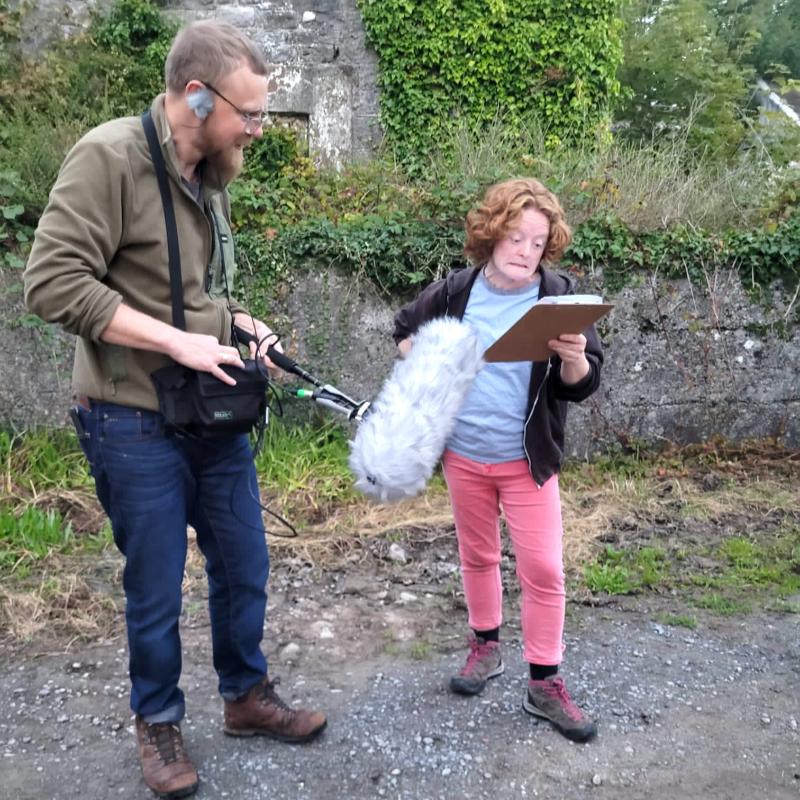
Walk the line(s)
Careful fact-checking by members of HLP, especially Norma Owens, also highlighted a few necessary changes. Some claims I’d heard made during my early research phase had to be left out of the script because they couldn’t be backed up by the historical record.
We also abandoned certain narrative ideas too.
For example, I initially had the modern lacemaker actually making lace on her knees while reciting the lace pattern. Wooden lace bobbins sound lovely being lifted and dropped on an old-fashioned straw pillow. (You can hear them during the walk’s first scene.) But this was quickly and rightly vetoed by my lacemaking friends – there was no realistic way our lacemaker could just get her pillow out and start lacing in the middle of a street.
Another example: we thought we might draw more obvious parallels between modern issues of housing, emigration, social inequality, infectious disease, and those same issues in famine times. We decided this was redundant. The similarities are clear enough; drawing attention to them wouldn’t really add anything. And perhaps we’ve all thought enough about Covid for now.
A final example. My first draft of the script had Mr Stepney St George helping out at the soup kitchen, not Julia de Villiers. For a story very much about women’s history, his presence stood out in the wrong way, and he was replaced with Julia.
The time-jump idea also started very differently. Initially I thought we would visit a series of different points in the history of lace in Headford: 18th-century beginnings; 19th-century peak; 20th-century decline.
However, both the trickiness of communicating this naturally in the script, and of depicting different periods distinctly in sound, quickly convinced me it was too complicated. We needed to return to the same time, each time.
So why 1847? I was a very cautious about it. That year is synonymous with the very worst period of the famine in Ireland. (It’s referred to as “Black ’47”.) I wondered how to approach it sensitively, in a sound walk format that is at least partially intended to be entertaining, and billed as an ‘adventure’.
But certain things counted in favour of 1847. Mainly, there was just a lot happening because of the famine, and a lot of historical material to draw from. For example, the soup kitchen was in operation in the farmyard. And the lace was at the height of its importance, with two large purchases made that year by British royals. And it was the year Stepney St George wrote letters begging for government famine relief. We were able to use his own words for some of Julia de Villers’ lines. I was very glad to be able to incorporate a real historical text in the script in this way.
But choosing 1847 did entail some important checks. We had to cross-check which of the known lacemakers were living at that time, and their approximate ages, in order to decide who might be encountered on the walk. We then checked in with living relatives to confirm they were happy for listeners to ‘meet’ their forebears. We also needed to check that the ‘lacemakers’ cottages’ on New Street were actually in existence by that time; old maps confirmed they were.
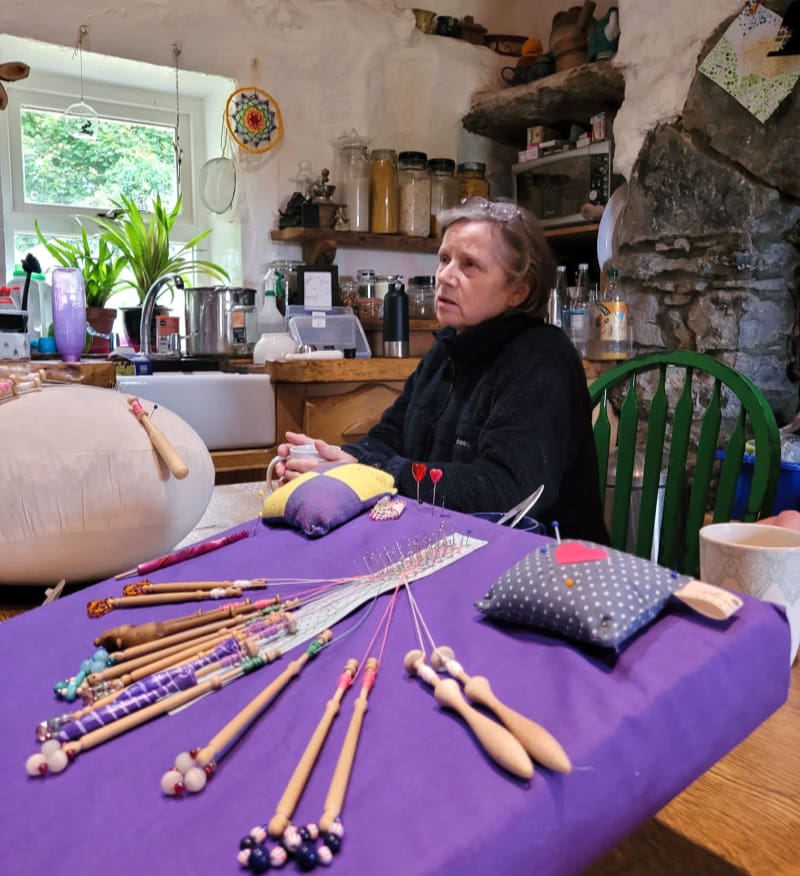
Avoid the crowd
There are plenty of really decent audio heritage tours out there on many different platforms – some geo-located, some not. And they seem to work well enough in providing important information and context for visitors in lieu of a human guide.
But I have to confess that I sometimes find such walks disappointing. We begin them hoping to be swept along with a story – bewildered, surprised, enlightened and moved. But instead what we often get is a lecture. Our attention wanders, we lose track in a barrage of names and dates. In many cases we can tell that the narrator is reading – and from a text written more for the eye than the ear.
So I would encourage anyone embarking on creating a walk: take the time to create something special, a walk that is as unique to your particular place and story as possible. And remember you are writing for the ear. Just like traditional radio, there are no rewinds. It may sound easy, but personally I find it harder than writing an essay! But the result will be worth the effort.
Walking guinea pigs
It is essential to test an audio walk with volunteer listeners as early as possible before publishing - it is the only way to find out how real people will actually walk the route. You might need to change more than you think.
Ideally you will have a mix of volunteers representing different kinds of target listeners. In the case of Headford Lace Trail I needed three kinds of people: locals who knew the town and the lace heritage so well as to be over-confident about the route; visitors from nearby who knew only a little about the town or the lace history; and foreign tourists who knew absolutely nothing about either. If you also have a variety of walking speeds represented, all the better.
It was not until I followed these guinea pigs around that I discovered some important things about how I had written the walk. For example, people kept walking when I expected them to pause, or paused when I expected them to keep walking. So, overall I needed firmer instructions from the ‘guide voice’. It would have been a disaster discovering this on launch day.
Volunteers are also helping you test your mix. They can tell you if a particular voice was too quiet, or music too loud. Having them listen in different kinds of ear/headphones can show up issues you hadn’t noticed with levels. Testing with a range of different devices with different processing speed, data connection and GPS accuracy, will help you see where trigger zones need to be moved, expanded, reduced.
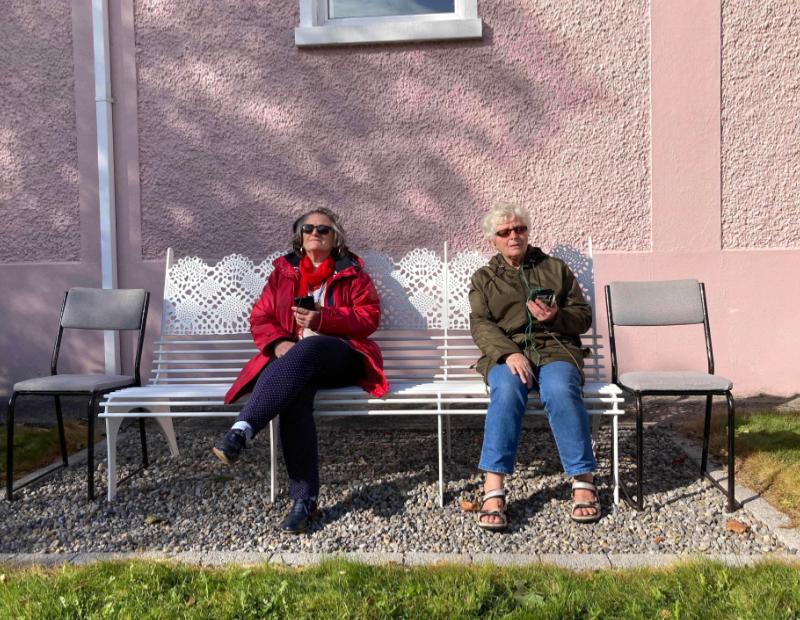
With trigger zones, my biggest self-inflicted challenge was creating audio clips that were on the longer side for the physical ground that their zones covered – meaning if people walked too fast they might trigger the next zone too soon. When you’re operating in tight margins like that, and you add in GPS inaccuracies that trigger zones a few moments earlier or later than expected, you get tricky knock-on effects.
So my biggest issue was audio from one zone colliding into the audio for the next. The obvious solution was to make the second zones conditional on the first ones. But I found that, in one or two places, people would often exit the first zone before it was finished, meaning the second wouldn’t trigger. Or in another couple of spots, they’d walk right through the second zone while still listening to the first, again meaning the second wouldn’t trigger. And this was after I’d incorporated clearer instructions into the script as best I could. It seemed more like a technical problem. So what could I do?
In one or two places, the solution was to combine two zones into one. This removed the risk of overlap, and the risk that a conditional might not be fulfilled, and ensured both zones would play in full. Ignacio at SonicMaps was very helpful and patient as I queried and worked through these issues, and carefully explained the downsides to this solution: longer audio clips means longer load times, which can obviously affect where a clip begins to play – and it also reduces the interactivity of the walk.
In a similar vein, again to avoid overlap, I set some of my smaller zones to ‘pause on exit’, in case a listener left the zone before its audio had finished, and triggered another zone to begin playing. ‘Pause on exit’ carried the risk that a bouncing GPS signal might place the listener suddenly ‘outside the zone’, and pause the audio, even though they hadn’t actually moved or exited the zone. I believe SonicMaps’ GPS accuracy threshold prevents this scenario arising a lot of the time – but there’s also a limit to how small a zone can be. This ‘zone hopping’ did happen to me once or twice with my smallest zones during testing. I enlarged them as much as I could, and didn’t experience that problem again.
Take a walk on the wild side
We make audio walks because we recognise that walking is powerfully different from sitting still. Our brains work differently while walking. In fact, walking feels fundamental to certain kinds of human cognition.
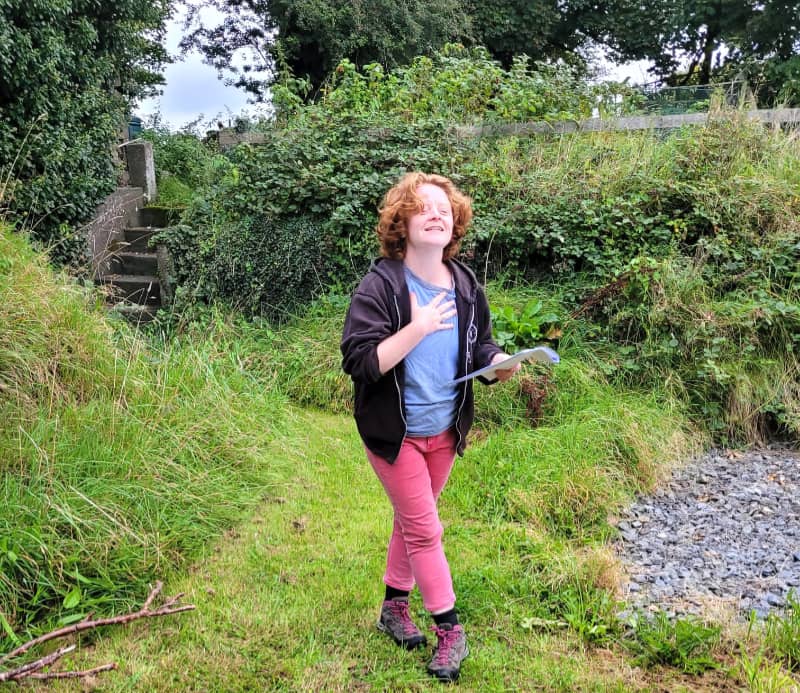
So perhaps it’s no surprise that it was only by walking – in the woods, away from the desk, the phone, and the blank page, and far from the site of the audio walk itself – that I was able to wrestle successfully with the most difficult planning and plot issues on this project.
I really can’t emphasise enough how strategically important this was for me.
So, a final piece of advice: when you are facing creative challenges, go for long walks in nature with the sole intention of deliberating over those challenges. It works.